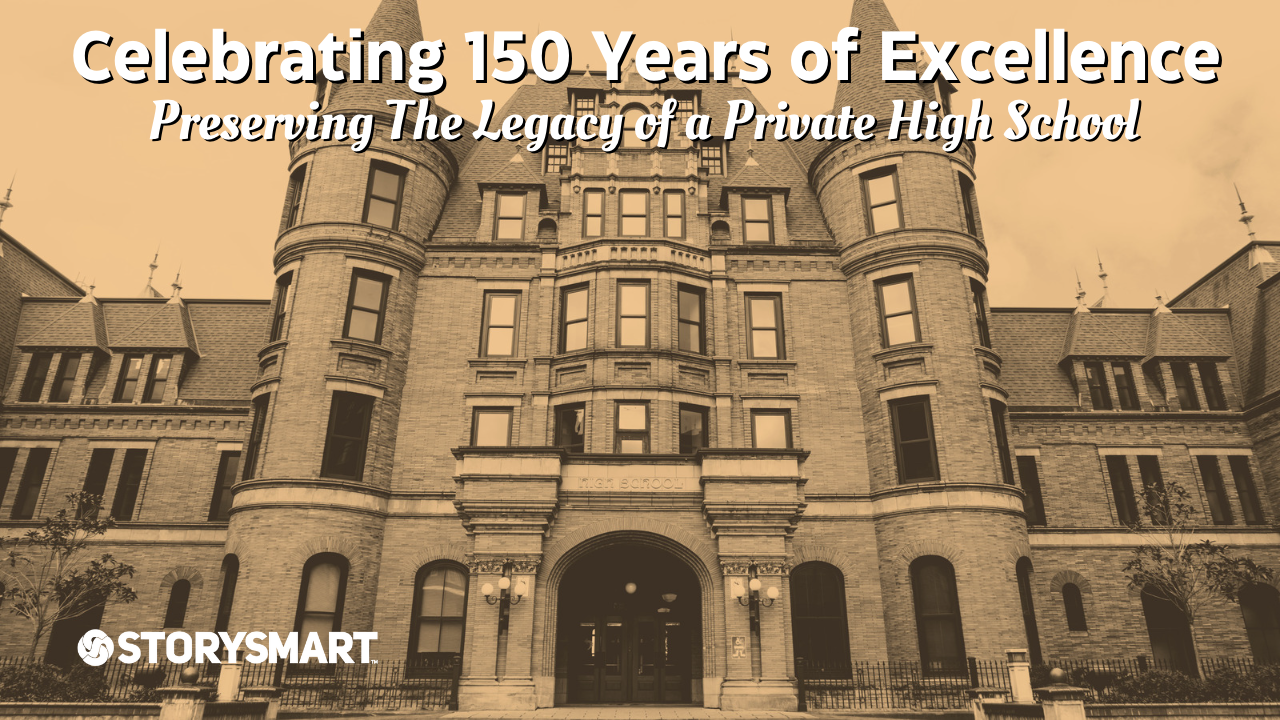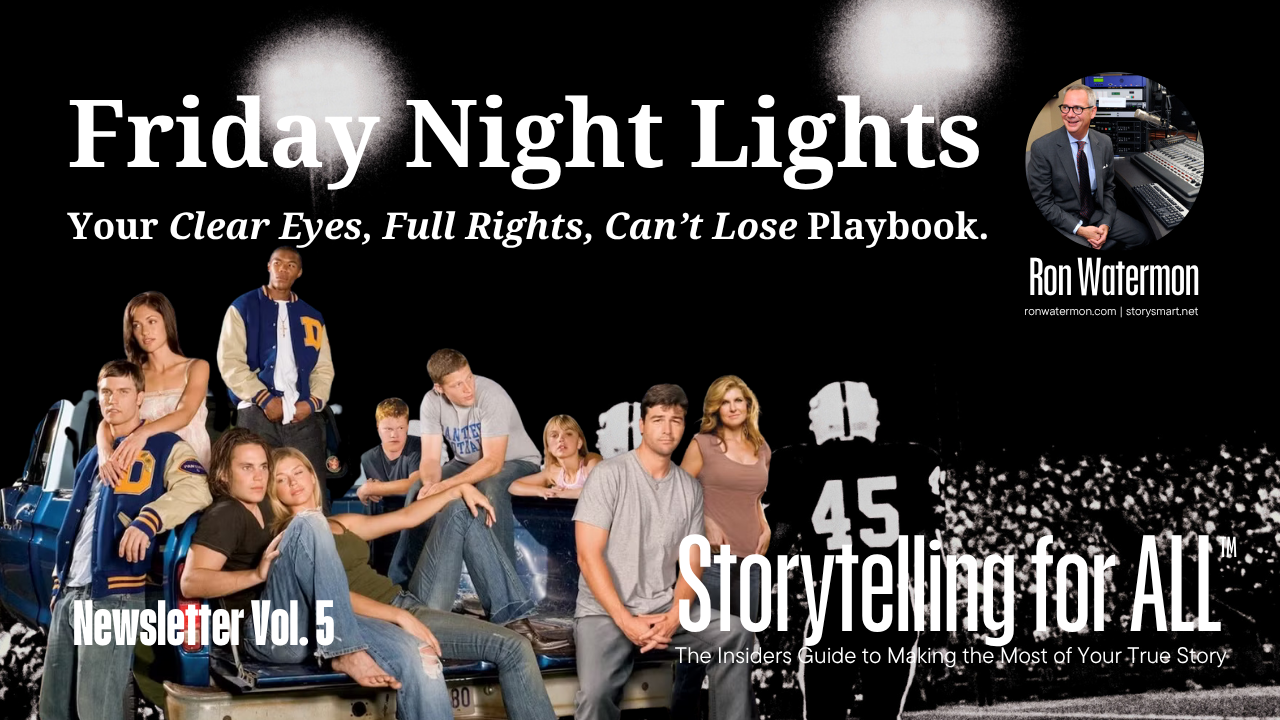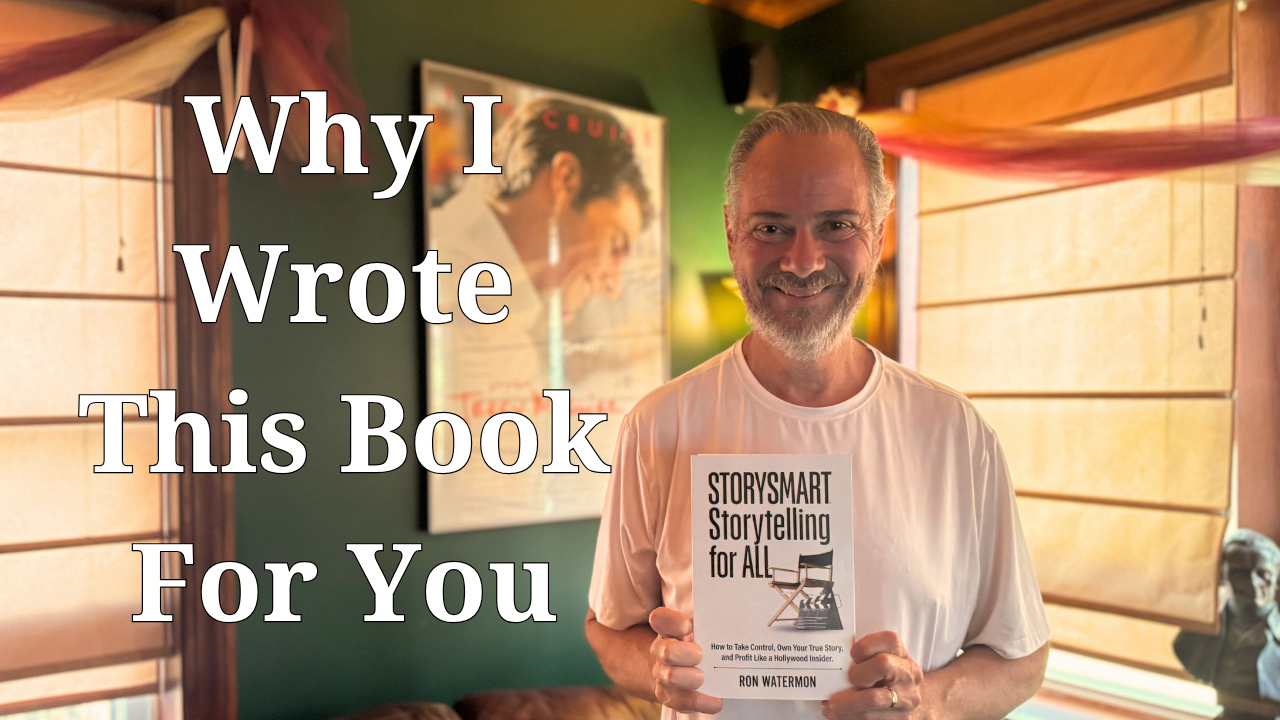Celebrating 150 Years of Excellence

Preserving the Legacy of a Private High School
St. Louis, MO – June 25, 2023 - In a world where legacies are built over time, milestones become the perfect opportunity to reflect on accomplishments and pave the way for an even brighter future.
For a private high school on the verge of celebrating its 150th anniversary, there is no better time to commemorate its rich history, honor its influential alumni, and build a stronger community.
That's where STORYSMART, the premier filmmaking service, is able to step in to help preserve and share the remarkable story of this esteemed institution.
In this eastern city that is home to many elite private high schools, the development team for this school feels the pressure to stand out and make the most of this landmark anniversary. The school is renowned for a proud tradition and an impressive list of alumni. The schools alumni include professional athletes in MLB, NHL, NFL, and NBA; six Congressmen and two former US Senators; three award-winning actors, and more than half a dozen former CEOs of fortune 500 companies. There alumni base is a real who’s who list. Institutions such as this school have a rich history and strong story to use to market themselves.
A milestone anniversary affords the school the opportunity to use the power of storytelling to strengthen their community, build their donor base and raise substantial money if they are STORYSMART about it.
Preserving Legacies and Our Shared History
Nonprofit organizations faced with the daunting task of raising funds and nurturing their community during significant anniversaries often feel the pressure to accomplish their goals within a tight deadline. Recognizing this challenge, STORYSMART offers a unique and comprehensive solution tailored to their needs of a non-profit with a deep community. With STORYSMART's one-stop shop approach to legacy storytelling, the school is able to gain access to a range of services that empower them to preserve their community's individual stories. The process of professional storytelling itself can be used as a fundraising tool.
Capturing Memories in Film and Print
STORYSMART's proprietary approach revolutionizes the preservation process. By assisting in digitizing photos, videos, and memorabilia, and capturing the oral history of a community, STORYSMART is able to create a powerful documentary film that immortalizes the institution's journey. These cinematic treasures become a lasting legacy, not only preserving the memories for future generations but also deepening the connection between the school and its donor base.
To complement the film, STORYSMART goes beyond the screen by creating a professionally published coffee table book. This keepsake allows alumni, current students, and supporters to relish in the captivating tales, stunning visuals, and heartfelt narratives that have shaped the school's illustrious history. Together, the film and the book bring the stories alive, leaving an indelible mark on the hearts and minds of all who experience them.
Building a Lasting Impact
STORYSMART understands that the true power of storytelling lies in its ability to transcend time and captivate the imaginations of individuals. By implementing a turnkey simple and systematized approach to building a digital archive, conducting cinema-quality documentary interviews in order to produce visually stunning films and books, STORYSMART ensures that the school's legacy will continue to inspire for generations to come. Perhaps what is more important is how the enterprise can be funded.
Nonprofits are able to turn to STORYSMART to use the storytelling process to raise money.
Most nonprofits are familiar with the vanity publishing world that includes companies that provide turnkey solutions to raise money through publishing. STORYSMART takes that process to a much richer level with on screen storytelling and museum quality archival services.
STORYSMART’s approach enables clients to raise money by asking their community members to make donations to be part of the project. Instead of pricing a few pages in a publication, the charity is positioning their donor’s participation as a way of preserving their own individual family’s story as part of the broader community story.
Raising Money Beyond The One Time Milestone
As the private high school prepares to celebrate its 150th anniversary, STORYSMART is ready to help the institution make the most of this momentous occasion. By harnessing the power of professional filmmaking and preserving the stories that have shaped the lives of influential individuals, the school can strengthen its community, deepen its donor base, and secure a prosperous future.
With STORYSMART's expertise, the school's legacy will be forever etched in history, reminding all of the remarkable achievements and the unwavering spirit that define this exceptional educational institution.
We are here to help you preserve your story in a powerful, professional and meaningful way that connects you with those you care about most. You have an open invitation from me to do a FREE storytelling consultation to help guide you on your path to preserving and sharing your story.
Discover the power of storytelling to build your community.
-- Ron Watermon , with Ghostwriting Assistance from ChatGPT
About STORYSMART®
Nothing is more enduring than a beautiful film that brings a story alive on screen and in our hearts. Great stories demand nothing less than cinematic Hollywood-quality storytelling. STORYSMART® specializes in helping public figures such as professional athletes, entertainers, former elected officials and celebrities make the most of their story using a proprietary approach that blends Hollywood-style cinematic storytelling with museum-like collection curation and story-focused brand licensing.
STORYSMART® provides Hollywood Quality filmmaking and storytelling consulting services, functioning as a high-end work-for-hire ghostwriting service specializing in cinematic storytelling rather than being limited to traditional book publishing (hint - you can do both if your are smart about your storytelling derivative rights). STORYSMART® services range from story preservation digital archive services like those used by Oprah Winfrey, Bon Jovi and Billy Graham, to story development, screenwriting, licensing, and professional documentary filmmaking.
STORYSMART® is ideal for clients interested in controlling and monetizing their own storytelling through story-based media production, publishing, and merchandising.
Learn more about our customized white glove approach and book your FREE CONFIDENTIAL consultation at storysmart.net
Filmmaking For ALL™ My Own Story™ Storytelling For ALL™
About Ron Watermon
Ron Watermon is the founder and CEO of STORYSMART, a nationwide premium storytelling service that empowers clients to have their stories professionally produced by experienced Filmmakers while retaining their intellectual property rights.
A creative and innovative communications leader with nearly three decades of experience, prior to founding STORYSMART, Ron spent 18 MLB seasons with the St. Louis Cardinals where he was responsible for modernizing the team's communications by leading their investment in video storytelling, brand journalism, fan engagement and social media.
Ron, who lost his father when he was five years old, knows how profoundly important and deeply personal storytelling is within families. He founded STORYSMART because he believes everyone matters, deserves to be remembered and is entitled to have their story told professionally.











